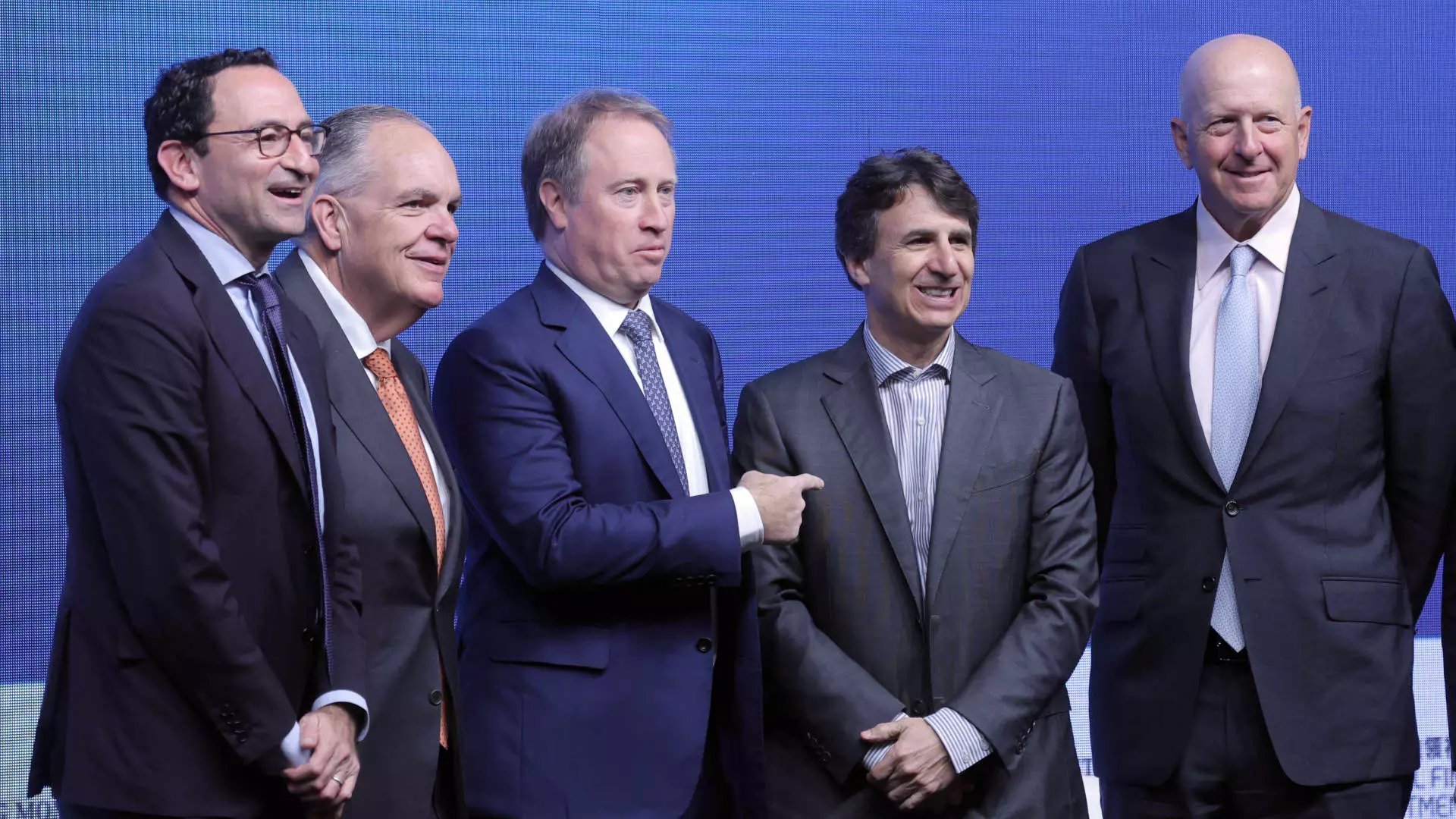The latest financial reports from American investment banks have heralded a spectacular quarter, marked by unprecedented trading activity and a notable increase in investment banking transactions. Following a prolonged period of uncertainty, attributed largely to regulatory constraints and rising interest rates, the market is finally witnessing a resurgence. Traders at institutions like JPMorgan Chase reported record revenues, with a remarkable 21% increase in quarterly earnings, amounting to $7 billion. Similarly, Goldman Sachs saw exceptional performance in its equities division, culminating in record-breaking yearly revenues of $13.4 billion. This uptick signals a welcome shift in the market dynamics, shifting the focus back on deal-making and aggressive trading opportunities.
Several interrelated factors have contributed to this rejuvenation. First and foremost, the changing stance of the Federal Reserve plays a pivotal role in shaping the financial landscape. With the Fed adopting a more accommodating policy, coupled with the political developments following the recent election of Donald Trump, confidence among investment banks has surged. Senior executives at leading firms like Morgan Stanley and Goldman Sachs have expressed optimism, suggesting that the market is poised for meaningful growth, particularly in mergers and acquisitions (M&A).
Morgan Stanley’s CEO, Ted Pick, emphasized the burgeoning confidence in the business environment. This is complemented by growing anticipation for favorable changes in corporate tax policies, which could accelerate deal-making efforts. As corporate entities begin to resume activities previously sidelined by uncertainty, investment banks are witnessing an influx of M&A activity. Johnson Pick noted, the backlog for merger deals is the strongest it has been in over five years. This resurgence is indicative of a broader confidence that may lead to increased economic activity across various sectors.
The resurgence in mergers and acquisitions is essential for the broader financial ecosystem. As pointed out by Pick, substantial M&A transactions often serve as a catalyst for numerous related activities within investment banks. High-margin mergers not only yield significant immediate profits but also facilitate other types of business, such as underwriting large loans or issuing stocks. This interconnectedness is vital for sustaining the operational momentum of investment banks. For instance, the successful completion of large mergers often leads to the creation of additional financial products and services, thereby incentivizing banks to further engage with their clients.
The stagnation in the M&A market over the past few years posed challenges for the investment banking sector, resulting in declines in activity levels and profitability. However, with the expected upswing in M&A processing becoming more tangible, firms are eager to capitalize on these opportunities. The excitement surrounding M&A contracts can hardly be overstated – these deals promise to form the backbone of the investment banking recovery.
As the M&A landscape becomes more favorable, the capital markets are also anticipated to pivot back towards normalcy. The recent rise in debt and equity issuance, showing a 25% increase from last year’s subdued numbers, foreshadows what may become a full-fledged market recovery. Analysts are responding positively to these trends; for instance, Morgan Stanley’s Betsy Graseck raised the earnings forecast for the bank, reflecting confidence in a sustained rebound of capital markets.
Another significant engine for growth lies in the initial public offerings (IPOs), which have stagnated in recent years. Solomon, CEO of Goldman Sachs, has hinted at a substantial backlog in deal-making, suggesting that the IPO market is gradually awakening. The combination of renewed CEO confidence and regulatory improvements could lead to a thriving market environment that could benefit not just institutional investors but also smaller enterprises looking to grow.
Wall Street stands at a precipice of opportunity as it emerges from a protracted phase of stagnation. The combination of favorable economic policies, a recovering M&A market, and an anticipated boost in IPO activity point to a significant shift in financial activity. The current resurgence not only revitalizes investment banks but also promises to reshape the economic landscape as corporate confidence starts to return. As dealmakers strategize for a more lucrative future, the investment banking community is uniquely poised to harness and navigate the forthcoming wave of activity, marking the dawn of a new era in finance.

